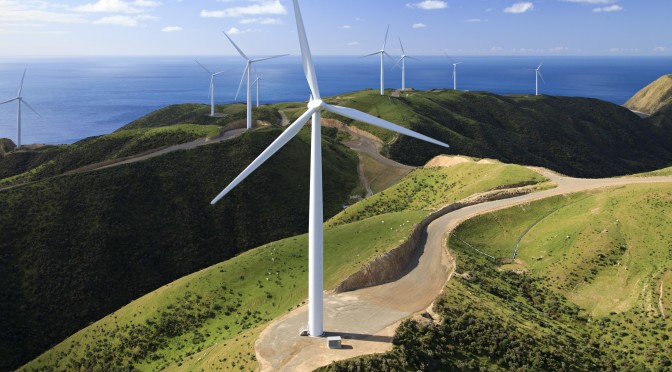New Zealand, a country known for its picturesque landscapes and commitment to environmental preservation, is increasingly turning to wind power as a key component of its energy transition. As the world grapples with the urgent need to reduce greenhouse gas emissions and mitigate the impacts of climate change, the role of renewable energy sources like wind power becomes ever more critical. In this context, New Zealand’s embrace of wind energy not only contributes to the global shift towards clean energy but also sets an example for other nations to follow.
Wind power has several advantages that make it an attractive option for New Zealand’s energy mix. First and foremost, it is a clean and renewable source of energy, meaning it does not produce harmful greenhouse gas emissions like fossil fuels do. This is particularly important for New Zealand, which has set ambitious targets to reduce its emissions under the Paris Agreement. By investing in wind power, the country can make significant strides towards achieving these goals while also demonstrating its commitment to global climate action.
Another advantage of wind power is its cost-effectiveness. Over the past decade, the cost of wind energy has fallen dramatically, making it increasingly competitive with traditional energy sources like coal and natural gas. In fact, recent studies have shown that wind power is now one of the cheapest forms of electricity generation in New Zealand. This is not only good news for the environment but also for consumers, who can benefit from lower electricity prices as a result of increased wind power generation.
New Zealand’s geography also makes it well-suited for wind power development. The country’s long coastline and hilly terrain create ideal conditions for harnessing wind energy, with many areas experiencing strong and consistent winds throughout the year. This has led to the construction of numerous wind farms across the country, which together have a total installed capacity of over 690 megawatts (MW). This figure is expected to grow significantly in the coming years, as more wind projects are planned and developed.
One such project is the Turitea Wind Farm, which is currently under construction near Palmerston North. Once completed, it will be the largest wind farm in New Zealand, with a capacity of 222 MW – enough to power around 100,000 homes. The project is expected to play a significant role in helping New Zealand achieve its renewable energy targets, which include generating 100% of its electricity from renewable sources by 2035.
In addition to large-scale wind farms, smaller-scale community wind projects are also gaining traction in New Zealand. These projects, often developed by local communities or cooperatives, aim to generate clean energy for local use while also providing economic benefits to the community. Examples of such projects include the Blueskin Bay Community Wind Project in Otago and the Awhitu Wind Farm in Auckland. These initiatives not only contribute to New Zealand’s renewable energy goals but also help to foster a sense of local ownership and pride in the country’s clean energy transition.
Despite the many advantages of wind power, there are also challenges that need to be addressed in order to fully realize its potential in New Zealand. One such challenge is the need for improved transmission infrastructure to connect wind farms to the national grid. This will require significant investment and planning, as well as cooperation between the government, industry, and local communities. Additionally, concerns about the visual and noise impacts of wind turbines must be carefully managed to ensure that the development of wind power remains socially acceptable and environmentally responsible.
In conclusion, wind power has a crucial role to play in New Zealand’s energy transition. Its clean, renewable nature, cost-effectiveness, and suitability to the country’s geography make it an ideal choice for helping the nation achieve its ambitious climate and energy goals. By continuing to invest in and support the development of wind power, New Zealand can not only secure a sustainable energy future for itself but also set a positive example for other countries to follow in the global fight against climate change.


